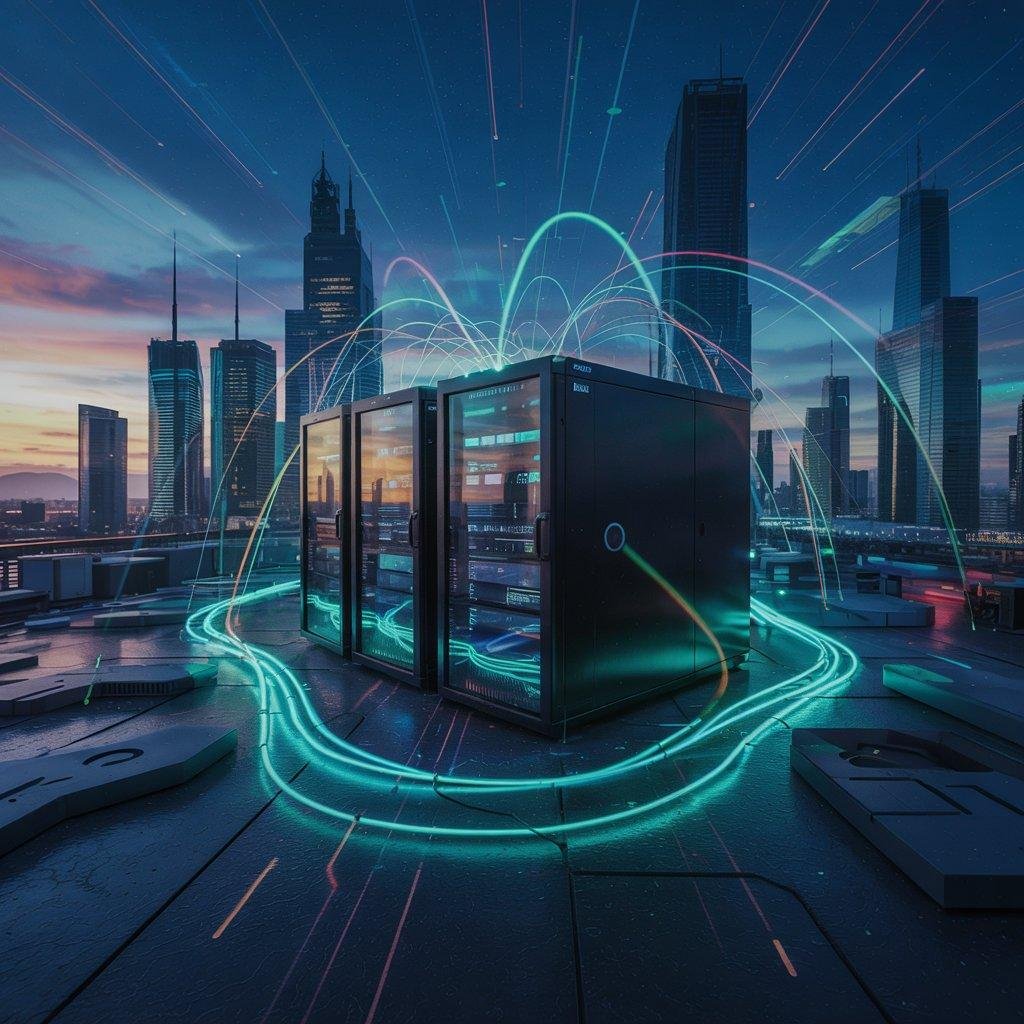by Admin 01 Apr
Edge Computing – Faster Processing and Quicker Response Time for Web Apps
In today’s digital world, speed matters. Whether you're streaming a video, playing an online game, or using a web app, you expect it to work smoothly without delays. But sometimes, slow loading times and buffering can ruin the experience. This is where Edge Computing comes in.
Edge computing is a new technology that helps process data closer to the user, making web apps faster, more efficient, and more reliable. Let’s understand what it is and why it’s changing the future of the internet.
What is Edge Computing?
In simple terms, edge computing is a way of processing data near the user, instead of relying on a faraway data center.
How it Works:
Normally, when you use a web app, your data travels to a large, centralized server (like one in another country).
This process takes time, which can cause delays.
With edge computing, the data is processed on a local server closer to you, reducing waiting time.
Think of it like ordering food:
Old way (Cloud Computing) → You order from a restaurant far away; it takes longer to arrive.
New way (Edge Computing) → You order from a nearby restaurant; it arrives quickly.
Edge computing makes web apps work faster by reducing the distance data needs to travel.
Why is Edge Computing Important for Web Apps?
✅ 1. Faster Performance
Since data is processed closer to users, web apps load instantly, reducing lag and buffering.
✅ 2. Lower Latency
Latency means "delay." With edge computing, response times are much faster, improving user experience.
✅ 3. Works Without the Internet
Some edge systems can process data even when there’s no internet connection. Once the connection is back, they sync with the main server.
✅ 4. Better Security
Since data is processed locally, there’s less risk of hacking or data theft compared to sending everything to a big data center.
✅ 5. Less Load on the Cloud
Cloud computing requires massive servers to handle billions of data requests. Edge computing reduces pressure on these servers, making everything run more smoothly.
Where is Edge Computing Used?
1. Streaming Services (YouTube, Netflix, etc.)
When you watch a video, edge computing stores commonly watched content in nearby servers.
This means you don’t have to wait for videos to load!
2. Online Gaming (PUBG, Fortnite, etc.)
Games require real-time responses.
Edge computing reduces lag, so players experience smooth gameplay.
3. Web Apps (Google Docs, Zoom, etc.)
Video calls and online documents need quick processing.
Edge computing reduces glitches and makes web apps work faster.
4. Self-Driving Cars
A self-driving car must process data in real-time to avoid accidents.
Edge computing helps cars make split-second decisions without depending on a distant cloud server.
5. Healthcare (Smart Devices & AI)
Devices like smartwatches track your heart rate.
Edge computing analyzes data locally and alerts doctors in case of emergencies.
Future of Edge Computing
As more people use web apps, edge computing will become even more important. In the future, we can expect:
✔ Even faster web apps with zero loading times.
✔ Better AI-powered apps that work in real-time.
✔ More secure data processing, reducing the risk of cyber-attacks.
✔ A smarter, faster internet with instant access to everything.
Edge computing is changing the way web apps work. By processing data closer to users, it makes web apps faster, more reliable, and more secure. Whether you're watching a video, playing a game, or using an online tool, edge computing ensures everything runs smoothly.
The future of the internet is all about speed and efficiency, and edge computing is leading the way.








